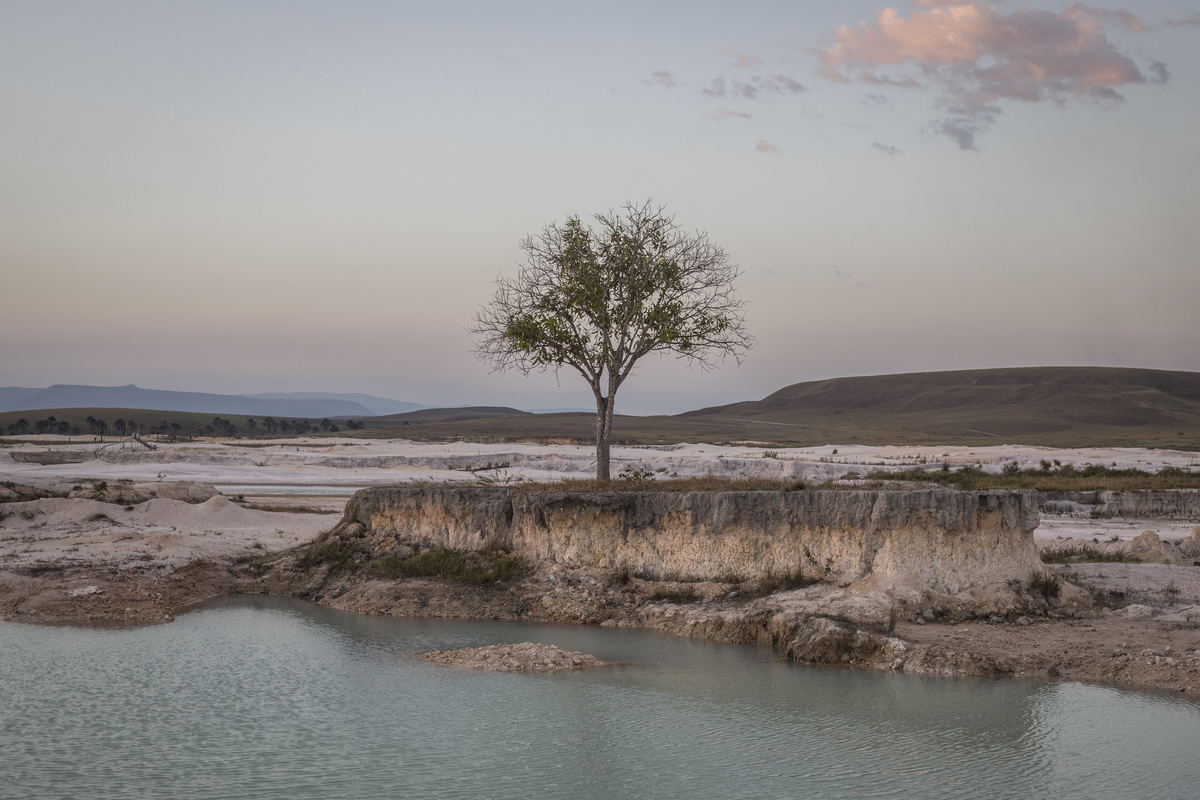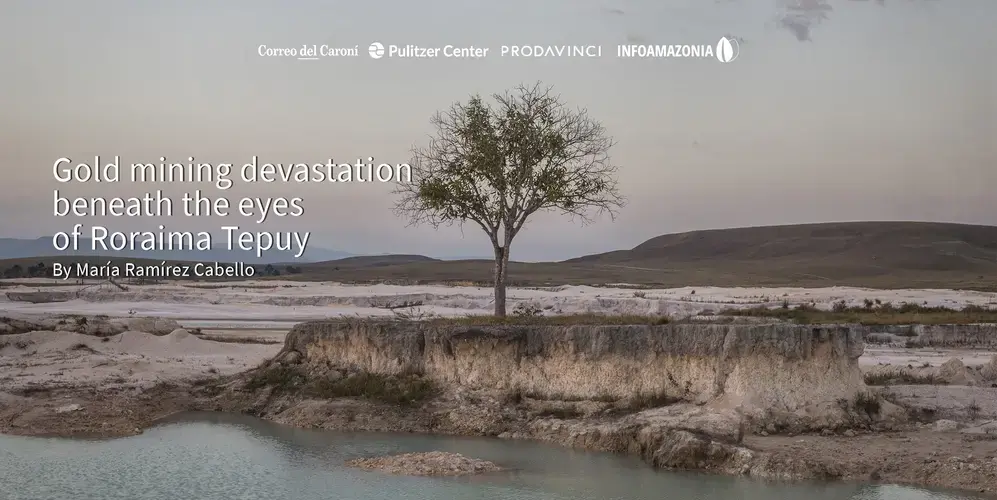
Ciudad Guayana — The COVID-19 pandemic has not stopped illegal mining, promoted by the Nicolas Maduro government, in the Venezuelan Amazon. As cases of the disease grew in the Caribbean nation, the Executive signed a resolution that allows the extraction of gold and diamonds in six vital Amazon rivers, which cross Indigenous territories. This may worsen environmental damage and add pressure to Indigenous communities.
In the 11 weeks of quarantine in the country, which suffers from a complex humanitarian crisis and an economic collapse second to none in the region, the flow of fuel supplies to mining areas continued, while in urban centers the streets remained mostly desolate. Analysts have found that while oil production falls, obtaining gold is one of the ways to earn income.
But, gold mining can also mean deforestation, contamination of rivers and soils, diseases, climate change, pressures on Indigenous culture, and disconnection from the environment as a common home.
On the last trip we made to the south of the country, between the end of February and the beginning of March 2020, I met Elena Fernández, a 47-year-old Pemon Indigenous woman who was born in Kumarakapay, in the Gran Sabana municipality.
Elena, mother of three children, was weaving a hat that the Indigenous people made with the fiber of a tree called moriche. It is a craft that she sells on the main thoroughfare of the community that connects Venezuela to Brazil.
In addition to selling handicrafts, Elena has an inn for tourists that has been totally desolate for the last months. Tourism collapsed in 2019, after a military attack on her community. In this context of high economic pressure, the road to the mine opened before her eyes. It was the only way to survive, she says, and dozens of other interviewees agree on that. She had no doubt.
“The ancestors respected the environment a lot, but now the situation forces us. Previously they were engaged in agriculture, but now it is being lost. The boys do not like to sow—we destroy, not only with artisanal mining but with large machinery."
Mining is the deepest pressure they are experiencing in southern Venezuela, where access to medicine and food is more difficult due to distance. Fortunately, ancestral knowledge and the practice of planting are still present in Indigenous territory, although with weaknesses.
When I think of the environment, life, and biodiversity, I think of the land I walk on. I live in Bolívar, one of the three states in southern Venezuela that make up the country’s Amazon region. My state holds the treasure that is Canaima National Park, which is distinguished by being the cradle of Angel Falls, the largest waterfall in the world and the impressive flat-top mountains called tepuis. Tepui Roraima is the biggest and is more than 2,000 meters above sea level, and shows the erosion of the oldest lands on the planet.
Venezuela is a megadiverse country and this land shows it without misgivings, with species of flora and fauna found nowhere else on Earth—but now it is threatened by illegal mining. What would happen after a few more decades of mining in the spectacular savannah that inspired some of the scenes from the Disney movie, "Up?" What would happen to the species that live there? What would happen to the tributaries that feed the Caroní river, which produces more than 70 percent of the hydroelectric energy consumed by the country? What would happen to the Indigenous people who live there?
The Indigenous communities already know that, in some rivers, they can no longer wash their food and that it is not so easy to fish. And that children, from a young age, are understanding the mining dynamics. They want to change directions from what seems inevitable, but they don't know how. There are some agroforestry initiatives, but these are weak, while the mine continues to drag the youngest people away.
The research we carried out with the support of the Pulitzer Center and published today on World Environment Day shows that 1,033 hectares of Canaima National Park are affected by illegal mining—all in an area where this activity is prohibited. In the last two decades, mining has expanded. This has resulted in clear violations of human rights and Indigenous territory, despite some timid efforts to address them.
Journalistic investigations have confirmed the complicity of government security forces in the extraction of minerals that, in the end, mostly leave the country as contraband, leaving scorched earth, violence, and greater misery in the communities that live around the mining centers.
The little profit that miners receive today comes at a great cost for the land—it leaves behind fragile soils, subjected to a loss of nutrients for years and with a low and, in some cases, improbable recovery capacity. But there seems to be no awareness of that.
“We must demystify the fact that mining is a response to development strategy. If Venezuela is to have water 50 years from now, we must stop intervening [or mining] in the area. Without this action, desertification will accelerate,” says biologist Anibal Invernon.
It is the first time that a journalistic team enters the mines of the spectacular Gran Sabana, so this material—with photos by Fabiola Ferrero—is exclusive. And this is a piece of destruction. Mining can expand uncontrollably in unprotected areas, and in other states, such as Amazonas (on the border with Colombia), where armed groups are involved in mining activity. Mining is also prohibited by law in Amazonas, but it is practiced with barely any limitations.
Our work is published in the independent media Correo del Caroní, in the national media Prodavinci and through partners such as InfoAmazonía. The study also includes the scientific advice of biologist Vilisa Morón Zambrano and the testimonies of those who have become part of the mining activity out of necessity, the Indigenous communities.

To read the full investigation, please visit the Correo del Caroní website.











